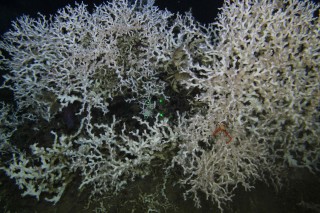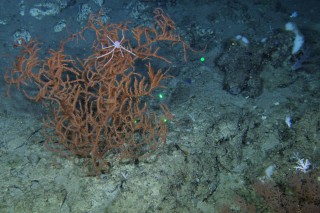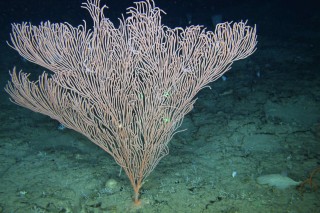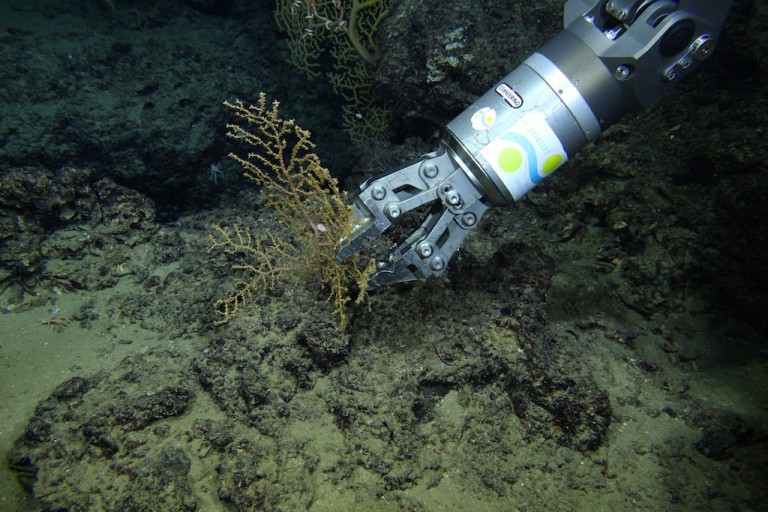
Remotely operated vehicle (ROV) Global Explorer MK3 successfully completed its first full dive this afternoon. The vehicle explored the seafloor to a depth of 600m at a site now called ‘Okeanos Ridge’, a feature that was mapped by the NOAA vessel Okeanos Explorer in April this year. This seafloor area has never been explored.
The Global Explorer MK3 is one of the few ROVs in the world that is able to record 3D video, in addition to high definition 2D video. “The 3D camera is spectacular. This is the first time I’ve ever seen one on an ROV, and the experience was similar to being in a manned submersible and looking out the window,” said Temple University professor Erik Cordes. “It really gives a better perspective on habitat features. We saw things like depressions that we would have missed on a 2D camera system.”

The diversity of coral species at this site was relatively high compared to other coral sites in the Gulf of Mexico. The team found, amongst others, black corals (so-named because of their black skeletons) likeLeiopathes and Bathypathes, an octocoral that resembled the primnoidParacalyptrophora, stylaster ‘lace corals’, and large thickets of hard scleractinian corals such as Lophelia. These corals were home to a squat lobster crabs, golden crabs and fish, like roughy and codlets. The team also encountered a large, uniform field of dead Lopheliarubble, also with golden crabs, before finding large living colonies at sites on a nearby rocky escarpment.
There is likely to be a golden crab (Chaceon fenneri) fishery operating in the area. Many golden crab fishermen operate by placing ropes on the seafloor that string together large traps into an array, altogether up to a kilometer and a half in length. Fishermen will drag a grappling hook across the bottom in order to snag these lines, and as they haul them back in, the traps are pulled across the bottom and sweep up anything they run into.

Erik Cordes noted some of the crab fishery activity in the area. “There was a crab boat deploying traps when we arrived at the site. We also saw an abandoned trap on the seafloor and a number of depressions during the dive that appeared to be from the traps. I’ve never seen such extensive coral rubble fields in the Gulf of Mexico before, so it really makes me wonder what this habitat looked like in the past.”
Today was R/V Falkor’s first deployment of a science class ROV, and considering this, the dive was a resounding success. The team was able to test the equipment, transit over nearly a kilometer of deep-sea coral habitat, record three-dimensional and two-dimensional video, and explore previously unknown coral communities in the Gulf of Mexico.

Chief Scientist Peter Etnoyer explained “not a lot of dives are like this. Sometimes we search for hours and don’t find corals, because the habitat’s not there. On this dive we landed right next to what we were looking for, liveLophelia. As we continued, we traveled over large patches of dead corals. Then we finally arrived in a new habitat with large, healthy looking Lophelia colonies, all this over the course of one kilometer. The ridge is 10 km, so there is clearly much more to explore.”

